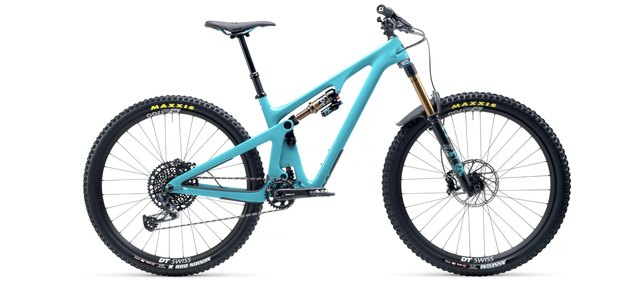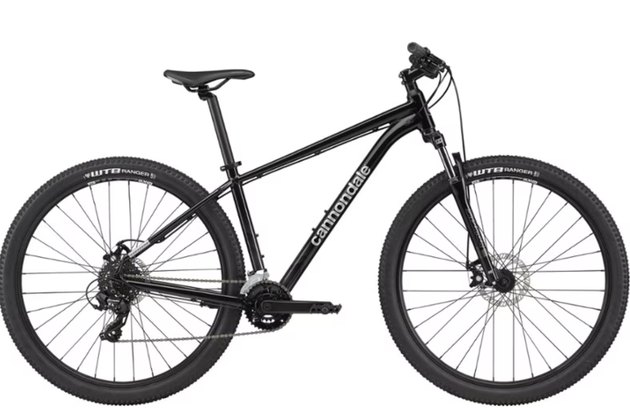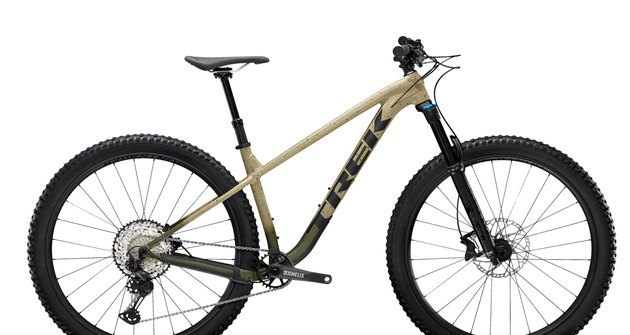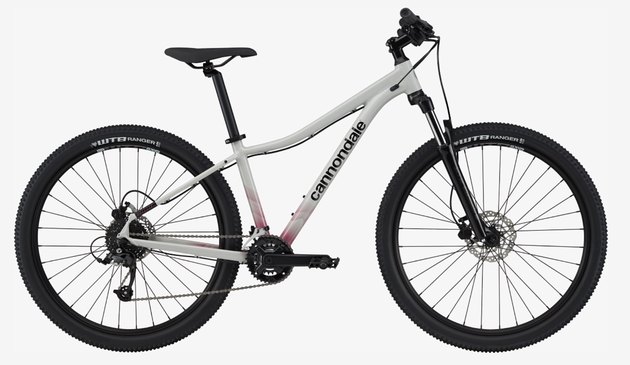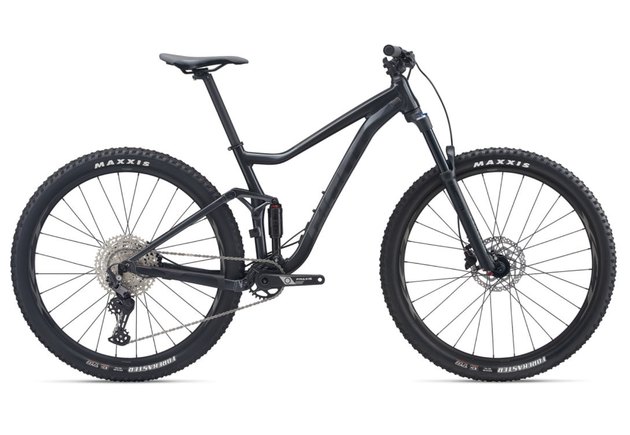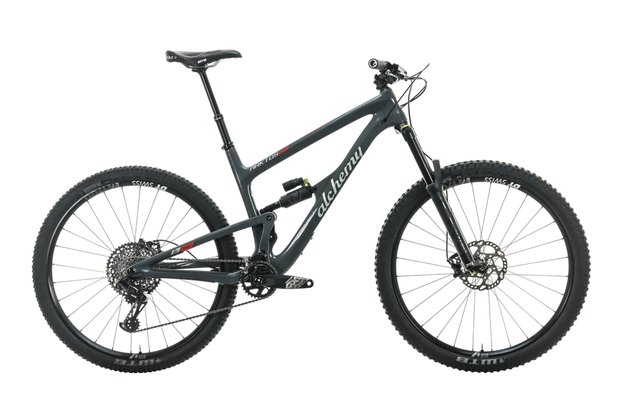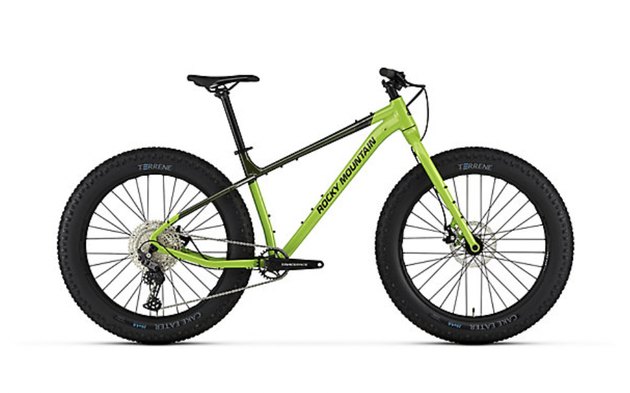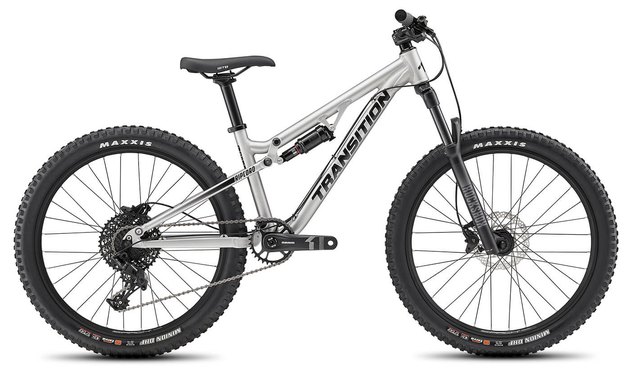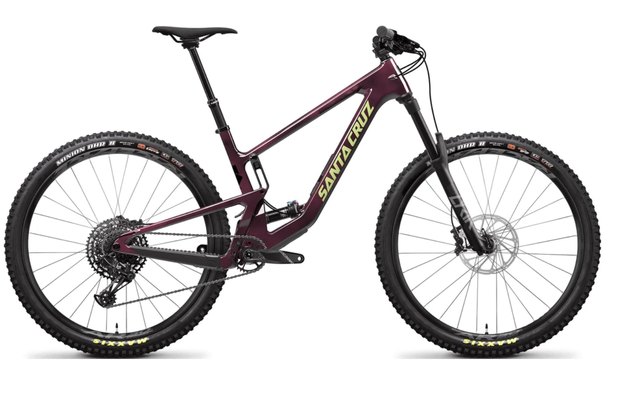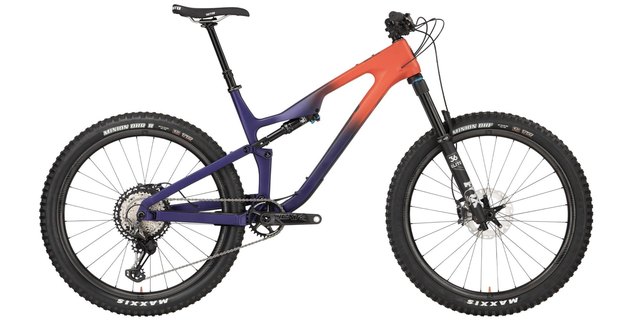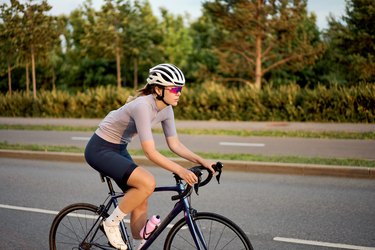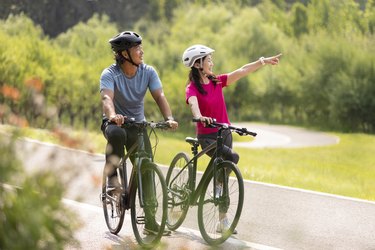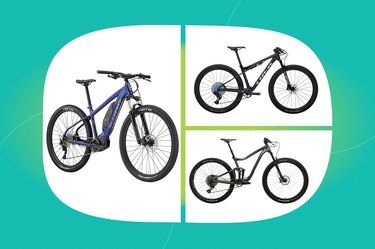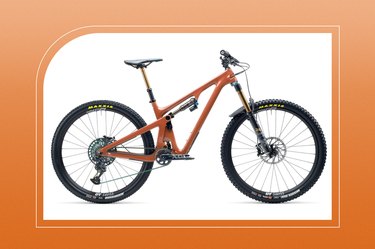
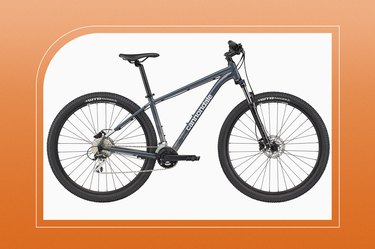
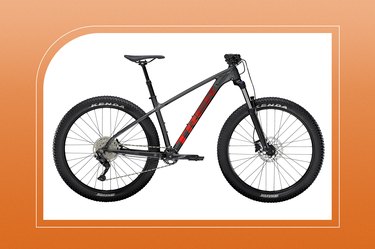

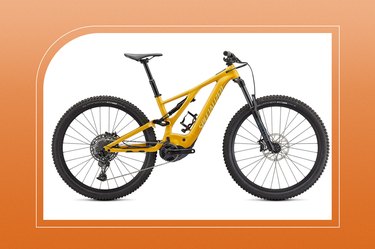
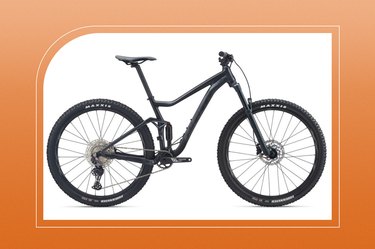
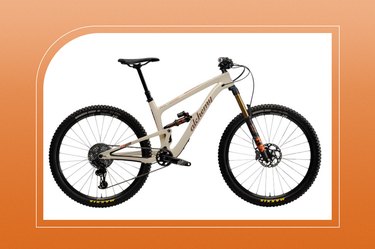
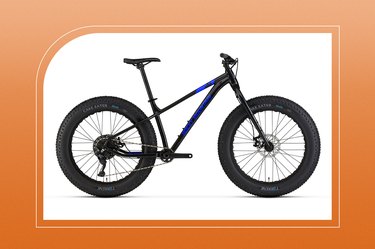
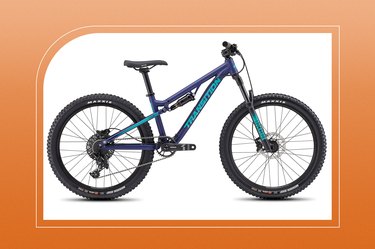
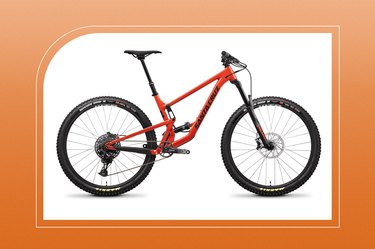
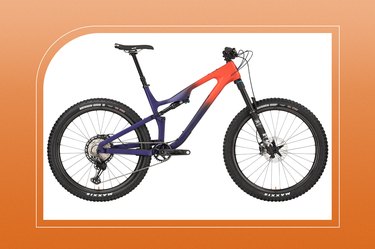
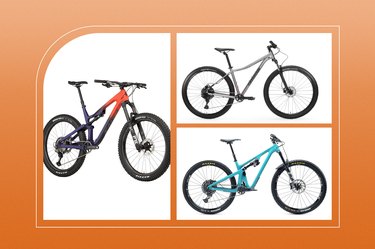
Mountain biking is an increasingly popular sport these days — and it's easy to understand why. After all, who doesn't want to get outside into wide-open spaces and revel in a good adrenaline rush?
The problem is, there are a dizzying array of different mountain bikes on the market to choose from for beginners cycling groomed green singletrack at a bike park, extreme enduro racers or riders somewhere in the middle.
Video of the Day
Video of the Day
And with so many mountain bike styles, brands and models, trying to pick the right bike can feel overwhelming.
How We Chose
To narrow things down to the best mountain bikes for your wants and needs, we tapped the experts on exactly what to look for in your perfect ride based on the following criteria. You can learn more about how we cover products here.
- Price
- Experience level
- Terrain
- Bike specs (size, frame, weight, tire type, etc.)
Now go embrace the outdoors with these best 11 mountain bikes of 2024.
A Quick Language Note
We make deliberate choices about the language we use, but some bike manufacturers market bicycles to women and men. However, the main difference between men's and women's bikes lies in the frame size. In most cases, men's bikes are a little taller than women's versions. Shop for your bike according to your body's height, making sure to check size charts before you purchase.
1. Best Overall: Yeti SB130 C2 GX Eagle
Among the best mountain bikes on the market, the Yeti SB130 takes the overall top spot. With its 29-inch wheels, carbon fiber frame, unique geometry and 30-pound weight, this trail bike thrives in all sorts of situations and types of terrain, ranging from flowy singletrack to gnarly big mountain trips.
The SB130 impresses for both climbing and downhill stretches, and it's well-balanced. It's the perfect crowd-pleasing bike that can handle anything you want to throw at it.
2. Best for Beginners: Cannondale Trail 8
The best mountain bikes for beginners are sturdy, fun and affordable, providing just the right introduction to the sport.
Enter the Cannondale Trail 8, a hardtail trail bike that's perfect for leisurely rides, low-impact trails and gravel roads thanks to its front suspension fork, eight speeds and light SmartForm C3 aluminum alloy frame.
3. Best for the Price: Trek Roscoe 9
When it comes to the best mountain bikes for the price, you can't beat Trek's Roscoe series.
Not only is the Roscoe 9 affordable, but this cross-country/trail bike comes with all the features you need to have a great day on singletrack: grippy plus-sized tires, a dropper post, a lightweight yet sturdy aluminum frame and front suspension. With 12 speeds and hydraulic disc brakes, the Roscoe 9 is stable, forgiving and playful.
4. Best for Women: Cannondale Trail 7
If you're searching for the best mountain bikes for women, consider the Trail 7 from Cannondale.
This ultra-powerful cross-country hardtail bike features narrower handlebars than usual and a women's-specific saddle designed for maximum comfort. It also comes in frame sizes XS to L and, with a light (but durable!) alloy frame, weighs in at 31 pounds.
5. Best Electric: Specialized Turbo Levo Alloy
The best electric mountain bikes can help you cover more ground and explore terrain while conserving energy.
The Turbo Levo Alloy does all that and more, thanks to its comfortable geometry, highly efficient motor and user-friendly interface. And because it comes from Specialized, you can ride easy knowing it's great quality.
6. Best Full-Suspension: Giant Stance 29 2
The best full-suspension mountain bikes are those with shock-absorbing systems over both their front and rear wheels.
The Stance 29 2 model from Giant is an affordable yet effective full-suspension mountain bike that's great for beginners and anyone who prefers a less-bumpy ride. This trail bike is versatile and smooth, thanks to its lightweight aluminum frame and 29-inch wheels.
7. Best for Men: Alchemy Arktos 29 GX Eagle
While the vast majority of mountain bikes are marketed as unisex, the technically unisex Alchemy Arktos 29 GX Eagle is consistently rated as one of the best mountain bikes for men.
This trail bike performs beautifully uphill, but can also tackle downhill, cross-country and big mountain trails, too. It's responsive, easy to use and flawless, thanks to its dropper seat post, grippy tires and lightweight carbon frame.
8. Best Fat Tire: Rocky Mountain Bikes Blizzard Alloy 20
This aggressive, off-the-beaten-path bike from Rocky Mountain Bikes is perfect for tackling snow, ice and gnarly trail conditions. The wide tires, trail bike geometry and plentiful cargo mounts will help you tackle any terrain.
Plus, it comes at an affordable price for any mountain bikers who are adding to their bike collection.
9. Best for Kids: Transition Ripcord
For the little rippers in your life, consider the Transition Ripcord.
Your kids will fall in love with this cross-country/trail bike, which is meant to do it all — pump tracks, bike parks and family singletrack rides. It has knobby tires, hydraulic disc brakes, air front and rear shocks and kid-specific geometry to keep them upright and balanced.
10. Best Customizable: Santa Cruz Hightower 3 CR
You can upgrade and customize this aggressive trail/all-mountain bike to your heart's content.
Not only is this model super stable but it's also responsive and comfortable. This chameleon combines all of Santa Cruz's best features into one superior bike.
11. Best for Technical Riding: Salsa Rustler XTR
For technical riding, you can't beat the Salsa Rustler, a full-suspension trail bike with nimble 27.5-inch carbon wheels and a lightweight carbon frame. This bike is guaranteed to help you maximize fun while tackling even the most technical terrain.
The Best Mountain Bike Brands
Which is the best mountain bike brand? There's no one-size-fits-all mountain bike for everyone, but you can rest assured you're getting a top-notch bike when you go with one of the best-rated mountain bikes from these best mountain bike brands:
- Yeti Cycles
- Alchemy Bicycles
- Cannondale
- Specialized
- Giant Bicycles
- Trek Bikes
- Santa Cruz Bicycles
- Salsa Cycles
Mountain Bikes vs. Road Bikes
If you're wondering which is better, a mountain bike or a road bike, the answer really depends on your riding needs or preferences. Road bikes feature a lighter frame and thinner tires and are best for riding wherever there's pavement, according to Schwinn Bikes.
Mountain bikes, however, are built to be heavier with thicker tires so they can handle more rugged terrain, like mud, rocks, tree roots, dirt, gravel or even snow.
So, if you plan to do a lot of bike commuting or riding on the roads around your neighborhood, a road bike is probably your best bet. If you plan on taking your rides into nature, a mountain bike will be more practical.
9 Things to Consider Before You Buy a Mountain Bike
Though every mountain biker is different, there are several top priorities to consider when buying a new bike, says Earl Walton, director of education at USA Triathlon.
1. Terrain
"Typically, for mountain biking, the choice of bike is less about the skill level and more about where you plan to ride," Walton says.
"Are you riding in a mostly flat area that has a few roots and ruts, mixing pavement and gravel or are you jumping in a chair lift at the local ski resort? Mountain bikes are made for specific types of terrain or disciplines. Check out the local trails and get to know them a bit. Go for a hike or a run and get to know your area. This goes a long way to defining the type of bike you want."
2. Bike Type
If you're a beginner, you'll likely want to consider a trail or cross-country bike, because they're incredibly versatile and can help you get comfortable with a wide variety of terrain types.
Cross-country: Cross-country bikes are made for racing speed, agility and responsive bike handling, but they're also a good fit for beginners wanting to play around.
Trail: These all-purpose bikes can do it all — you can casually ride singletrack or send it downhill. They're incredibly versatile and can help beginners get comfortable with a wide variety of terrain types.
Enduro: Enduro bikes are good for racing, but they're also handy for any situation in which you want to go fast, both uphill and downhill.
Downhill: These bikes are specially designed for bike parks and downhill races, with big cushiony suspension (often full suspension) and long wheelbases.
3. Suspension Level
Just like a car, a mountain bike comes with varying levels of suspension, or the system designed to absorb shock and give you a smooth (or bumpy!) ride.
Full suspension: As the name suggests, full-suspension bikes are designed for maximum shock absorption. Full-suspension models typically feature shock absorbers on the front and rear of the bike. Full-suspension bikes are usually among the most expensive (and heavy) bikes. They can also be more difficult to maintain.
Hardtail: Hardtail bikes have front suspension only — there's no shock absorption on the rear of the bike. These bikes tend to be more affordable, lighter and easier to maintain.
"In the simplest terms, a hardtail can handle just about anything with the right amount of skill and will feel stiffer for climbing or longer flatter riding," Walton says. "'The full squish' is just as it sounds, super comfy and can tackle the rougher terrain. I like the full suspension for my trail riding as I find it to be a bit more comfortable and sometimes a bit safer when it comes to tricky spots. That said, it also comes with a bigger price tag and can be sluggish on flatter terrain."
If you're just starting out, go with a hardtail bike — you can always upgrade to full suspension later as you get more into the sport.
4. Fit and Sizing
The bike that works for your super tall best friend won't work for you, and vice versa. You need to find a bike that's appropriately sized for your body — more specifically, your height. Mountain bikes typically come in four sizes, all based on the height of the rider: small, medium, large and extra-large.
"A bike that does not fit you makes riding uncomfortable at the very least, but can also make it dangerous," Walton says. "Remember that you are up for an adventure, so your bike should be an extension of yourself and your skills. A perfect fit will lead to a perfect ride."
5. Frame Material and Weight
You also want to consider the bike's frame, which is typically made of two main types of materials: aluminum alloys or carbon fiber.
There are pros and cons for both materials, but generally speaking, carbon fiber tends to be more expensive, lighter and stiffer. Aluminum alloy frames are cheaper, but they're also heavier.
Both materials are durable, though as an added bonus, many bike manufacturers offer some type of warranty, too. Choosing the right frame material boils down to what you want to spend and the type of riding you love.
6. Wheel Size and Tire Type
There are two main mountain bike wheel sizes for adult riders: 27.5 and 29.
You'll choose the wheel size based on what you hope to get out of your bike — generally speaking, 27.5-inch wheels are lighter and they accelerate faster, which can make your bike feel more responsive and snappy.
The larger 29-inch wheels tend to have better traction and are more efficient on longer rides; they can also make it easier to roll over objects you might encounter, like rocks, boulders, tree roots and other features. Because the 29-inch wheels are larger, they're generally better suited for taller riders, too.
No matter your wheel type, know you don't have to be committed to one tire type forever. Just like with your car, you can switch and upgrade your mountain bike tires depending on the type of terrain or riding you love the most. Tires are designed with specific features in mind, including grip, speed, control, weather and trail material.
"We're talking knobby, fatter tires that grip the trail and hold a line," Walton says. "Quality tires are important no matter where you ride, but you will also be met with an array of wheel sizes."
7. Gears
All bikes, including mountain bikes, feature gears that can help you optimize each stroke of the pedals. The more gears on your bike, the more choices you have when you're climbing uphill or cruising back down. The higher the number of gears, however, the more things that can go wrong and need to be repaired.
"There definitely was an old-school mindset of the more gears, the better," says Brandon Slate, an adventure specialist at Rocky Mountain Outdoor Center in Buena Vista, Colorado. "But 'derailleur is failure' and those things break. They can be expensive and time-consuming to maintain."
8. Saddle Design
The mountain bike saddle, aka the mountain bike seat, can make a huge difference in how comfortable your rides are. There are bike saddles made especially for male and female pelvic structures, as well as saddles that can relieve pressure, help reduce chatter and keep you cool.
"You spend hours on it, so comfort is super key," Slate says.
On a related note, your mountain bike may feature a dropper seatpost, which is a special mechanism that lets you quickly adjust the height of your seat. These can be handy especially as you advance in the sport.
"It helps you put your body in the right anatomical position to perform whatever skill," Slate says.
9. The Fun Factor
Finally, don't forget that mountain biking is all about having fun. If a bike doesn't excite you, move along and try something else.
"This is my rule with any and all new equipment," Walton says. "Does it make me want to get up in the morning and go? Buy the bike that excites you — after all, you're buying a mountain bike, not a new desk. You should get a thrill just thinking about your next ride."
